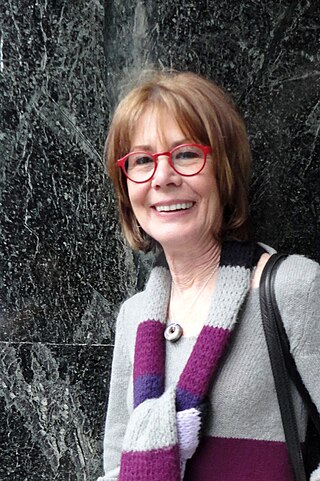
The Art Gallery of Ontario is an art museum in Toronto, Ontario, Canada. The museum is located in the Grange Park neighbourhood of downtown Toronto, on Dundas Street West between McCaul and Beverley streets just east of Chinatown and just west of Little Japan. The museum's building complex takes up 45,000 square metres (480,000 sq ft) of physical space, making it one of the largest art museums in North America and the second-largest art museum in Toronto, after the Royal Ontario Museum. In addition to exhibition spaces, the museum also houses an artist-in-residence office and studio, dining facilities, event spaces, gift shop, library and archives, theatre and lecture hall, research centre, and a workshop.

Edward Burtynsky is a Canadian photographer and artist known for his large format photographs of industrial landscapes. His works depict locations from around the world that represent the increasing development of industrialization and its impacts on nature and the human existence. It is most often connected to the philosophical concept of the sublime, a trait established by the grand scale of the work he creates, though they are equally disturbing in the way they reveal the context of rapid industrialization.

Rebecca Belmore D.F.A. is an interdisciplinary Anishinaabekwe artist who is notable for politically conscious and socially aware performance and installation work. She is Ojibwe and member of Obishikokaang. Belmore currently lives in Toronto, Ontario.

Idris Khan OBE is a British artist based in London.
Susan Silas is a visual artist working primarily in video, sculpture and photography. Her work, through self-portraiture, examines the meaning of embodiment, the index in representation, and the evolution of our understanding of the self. She is interested in the aging body, gender roles, the fragility of sentient being and the potential outcome of the creation of idealized selves through bio-technology and artificial intelligence.
Jin-Me Yoon is a South Korean-born internationally active Canadian artist, who immigrated to Canada at the age of eight. She is a contemporary visual artist, utilizing performance, photography and video to explore themes of identity as it relates to citizenship, culture, ethnicity, gender, history, nationhood and sexuality.

Suzy Lake is an American-Canadian artist based in Toronto, Canada, who is known for her work as a photographer, performance artist and video producer. Using a range of media, Lake explores topics including identity, beauty, gender and aging. She is regarded as a pioneering feminist artist and a staunch political activist.
Susan Dobson (born September 19, 1965) is a Canadian artist based in Guelph, Ontario. She is best known for her photographs and installations, many focusing on the theme of urban landscape and suburban culture.
Sanaz Mazinani is an Iranian–born Canadian multidisciplinary visual artist, curator and educator, known for her photography and installation art. She is currently based in San Francisco and Toronto.

Sheba Chhachhi is a photographer, women's rights activist, writer, film-maker and an installation artist. She is based in New Delhi and has exhibited her works widely in India and internationally.
Sarah Anne Johnson is a Canadian photo-based, multidisciplinary artist working in installation, bronze sculpture, oil paint, video, performance, and dance.
Nicole Collins is a contemporary Canadian artist whose work, which takes the form of painting, performance, video, and sound, explores the effect of time, accumulation, force and heat on visceral materials. She currently teaches at OCAD University.
Deanna Bowen is an interdisciplinary artist whose practice includes films, video installations, performances, drawing, sculpture and photography. Her work addresses issues of trauma and memory through an investigation of personal and official histories related to American slavery, migration, the Civil Rights Movement and the Ku Klux Klan. Bowen is a dual citizen of the US and Canada. She lives and works in Montreal.
June Clark is a Toronto-based artist working in photography, sculpture and collage. Formerly known as June Clark-Greenberg, her autobiographical works explore issues of history, memory and identity through reflections on her Harlem childhood and subsequent migration to Canada as a young adult.
Carole Condé D.F.A. is a Canadian artist whose practice responds to critical contemporary cultural, social, and political issues through the use of collaboration and dialogue. Condé and long-time collaborator and partner Karl Beveridge challenge concepts of ideology, power, and control. In their career, which spans over thirty years, Condé and Beveridge have had over fifty solo exhibitions at major museums and art spaces across four continents, including: the Institute of Contemporary Arts in London, UK; Museum Folkswang in Germany; the George Meany Centre in Washington; Dazibao Gallery in Montréal; Centro Cultural Recoleta in Buenos Aires; the Art Gallery of Alberta; and the Australian Centre for Photography in Sydney.
Karl Beveridge is a Canadian artist. His practice responds to critical contemporary cultural, social, and political issues through the use of collaboration and dialogue. Beveridge and long-time collaborator and partner Carole Condé challenge concepts of ideology, power, and control.
Nadia Huggins was born in 1984 in Port of Spain, Trinidad and Tobago. She now resides in Saint Vincent and the Grenadines. Nadia Huggins is a self-taught photographer and graphic designer who has worked extensively throughout the Caribbean. She was awarded the Festival Caribbeen de L'image du Mémorial Acte Jury Prize in Guadeloupe in 2015.
Janice Gurney is a Canadian contemporary artist born in Winnipeg, Manitoba. She graduated University of Manitoba in 1973 with a Bachelor of Fine Arts Honours degree and later received a Master of Visual Studies degree from University of Toronto in 2007 with a collaborative degree in Book History and Print Culture. She went on to get a PhD in Art and Visual Culture at Western University in 2012.
Maia-Mari Sutnik, was the first Curator of the Curatorial Department of Photography at the Art Gallery of Ontario in Toronto.






